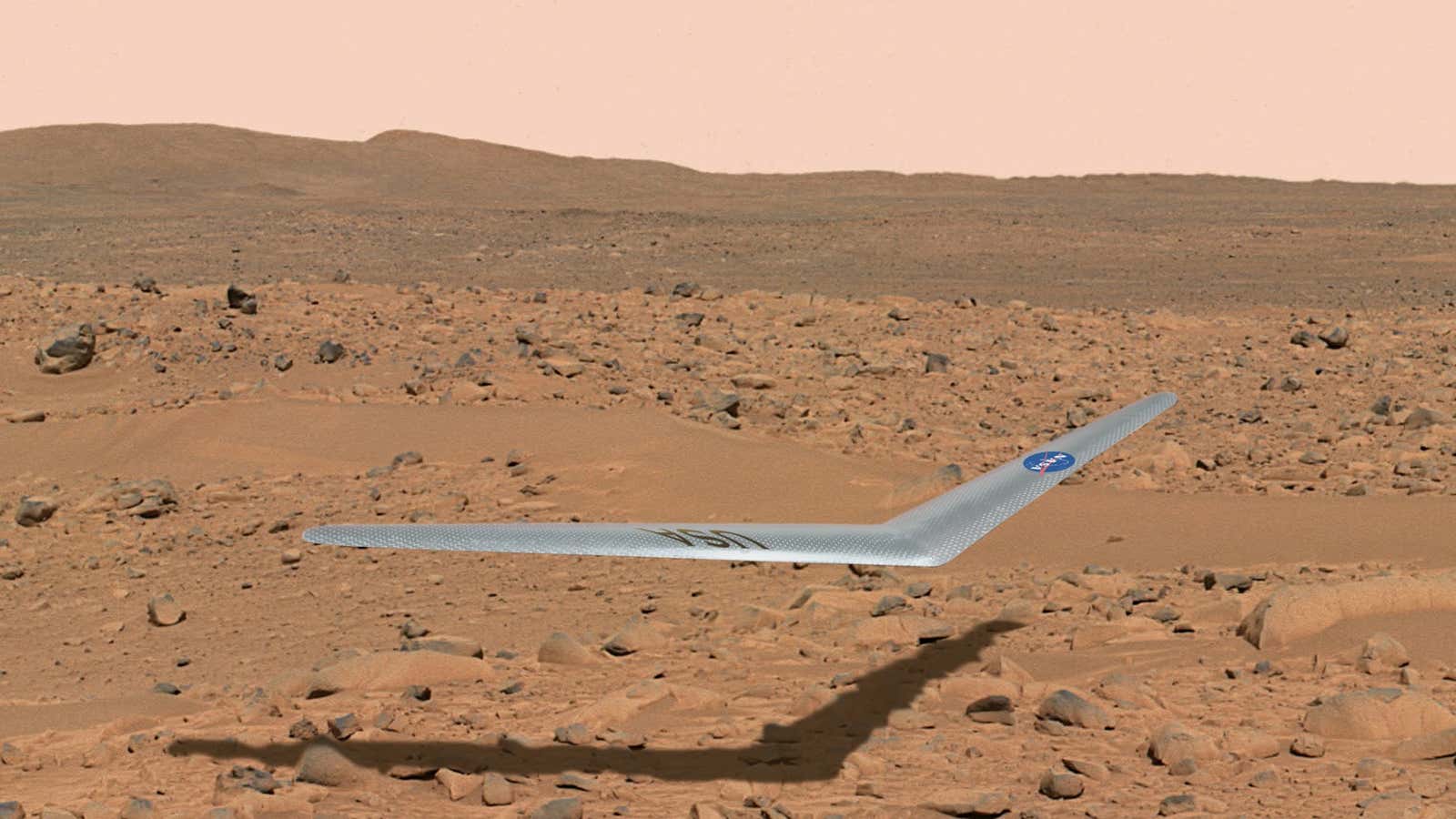Usually when boomerangs are tossed into the air and don’t return, there’s a problem. But NASA may soon send a boomerang-shaped aircraft to Mars in the hope that it stays there, so that it can check the planet out ahead of an eventual manned mission to the surface.
NASA says it will test its verbosely titled “Preliminary Research Aerodynamic Design to Land on Mars”—or, somewhat more simply, the Prandtl-m—plane by releasing it from a high-altitude balloon at about 100,000 feet later this year. If the tests go according to plan, the plane could become the first aircraft to fly across Mars in the 2020s. Researchers are working out how to make the aircraft foldable, so that it could be deployed from the same satellite as a future Mars rover.
“If the Prandtl-m completes a 450,000-foot drop, then I think the project stands a very good chance of being able to go to NASA Headquarters and say we would like permission to ride to Mars with one of the rovers,” Al Bowers, Prandtl-m’s program manager, said in a news release.
The Prandtl-m would theoretically eject from a satellite above Mars, glide down to the surface, and land. The plane could then be operated like a drone, flying over Mars’ surface, checking out proposed landing sites for future manned missions to determine their suitability for landings.
NASA has agreed to fund two balloon-drop tests of the Prandtl-m over the next few years, but the research team isn’t yet sure how how it’ll track the aircraft. ”We are going to use GPS initially, but obviously there is no GPS on Mars, so later on we will have to find something else for navigation,” Bowers said.
Although shaped like a boomerang, NASA’s proposed design isn’t meant to spin around and return to a certain point. The design is meant to help the aircraft survive the flight down to Mars’ surface. The Prandtl-m will most likely be made out of fiberglass or carbon fiber—light enough to survive the trip up into space, and the friction down after it’s ejected. “We believe this particular design could best recover from the unusual conditions of an ejection,” Bowers said.
Perhaps when NASA’s Valkyrie robot becomes the first thing with legs to walk on Mars, it can play with the boomerang in its downtime. It’ll be a good way to pass the time until humans show up a decade later.
